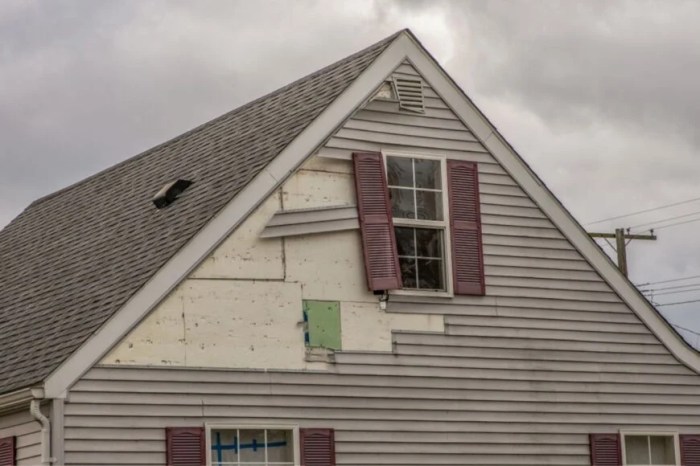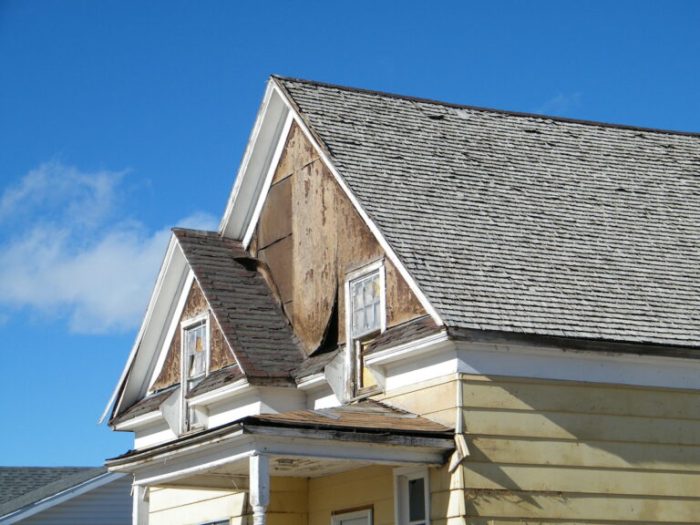The Importance of Addressing Missing Siding on Your House
As the issue of missing siding on house arises, it opens a door to various challenges and solutions. Let's delve into the reasons, impacts, repair options, and preventative measures surrounding this common problem.
Exploring the causes, effects, and solutions to missing siding can offer valuable insights for homeowners looking to maintain their property's integrity.
Causes of Missing Siding
There are various reasons why siding may go missing on a house, ranging from weather-related damage to improper installation.
Weather-Related Damage
Extreme weather conditions such as strong winds, hailstorms, or heavy rain can cause significant damage to siding, leading to it becoming loose or completely detached from the house. For instance, high winds can rip off siding panels, while hail can create dents and cracks that weaken the siding's integrity over time.
Improper Installation
When siding is not installed correctly, it is more prone to coming loose or falling off. Improper installation techniques such as using the wrong nails, not securing the siding properly, or failing to account for expansion and contraction can all contribute to siding going missing on a house.
Impact of Missing Siding

Missing siding on a house can have several negative consequences that go beyond just the aesthetic appearance of the property. The structural integrity of the building can be compromised, leading to potential safety hazards and increased maintenance costs. Additionally, missing siding can also impact the energy efficiency of the house, causing a rise in energy bills due to heat loss or gain.
Structural Integrity
Missing siding exposes the underlying structure of the house to the elements, such as rain, snow, and wind. Over time, this exposure can lead to moisture infiltration, rot, and mold growth, weakening the structure and potentially causing structural damage. It can also provide entry points for pests, further compromising the integrity of the building.
Energy Costs
The absence of siding can result in poor insulation, allowing heat to escape during the winter and enter during the summer. This means that the HVAC system has to work harder to maintain a comfortable indoor temperature, leading to increased energy consumption and higher utility bills.
Properly installed siding acts as a barrier, helping to regulate the indoor temperature and reduce energy costs.
Repair Options for Missing Siding
When it comes to repairing missing siding on your house, there are a few different options to consider. You can either tackle the repair yourself or hire professionals to do the job. It's important to weigh the pros and cons of each approach to ensure the best outcome for your home.
DIY Siding Repair
- Pros:
- Cost-effective, as you won't have to pay for labor
- You have control over the repair process
- Cons:
- Requires time, effort, and some level of expertise
- Mismatched siding materials may not blend well with existing siding
Professional Siding Repair
- Pros:
- Skilled professionals ensure a high-quality repair
- Guarantees a seamless look with properly matched materials
- Cons:
- Costlier than a DIY approach
- You have to rely on the schedule and availability of the professionals
Tips for Matching New Siding
When replacing missing siding, it's important to match the new materials with the existing siding for a cohesive look. Here are some tips to help you achieve a seamless result:
- Take a sample of the existing siding to the store to find a match
- Consider painting the new siding to match the color of the existing siding
- Consult with a professional to ensure proper matching of materials
Preventative Measures

Preventing siding from going missing is essential to maintain the overall integrity and appearance of your home. By following a few simple preventative measures, homeowners can ensure that their siding remains intact for years to come.
Design a Checklist for Homeowners
- Regularly inspect siding for any signs of damage, such as cracks, warping, or loose panels.
- Keep trees and bushes trimmed to prevent branches from hitting and potentially damaging the siding.
- Ensure that gutters are clear of debris to prevent water from overflowing and causing damage to the siding.
- Check for any gaps or openings where animals or pests could enter and potentially damage the siding.
Organize a Maintenance Schedule
- Establish a routine maintenance schedule to inspect the siding at least twice a year, ideally in the spring and fall.
- Consider hiring a professional to conduct a thorough inspection and maintenance of the siding annually.
- Address any issues promptly to prevent further damage and potential loss of siding.
Create a Guide on How to Inspect Siding
- Start by visually inspecting the siding for any noticeable signs of damage or wear.
- Check for areas where the siding may be loose or pulling away from the house.
- Look for any discoloration or mold growth, which could indicate moisture issues behind the siding.
- If you notice any issues, take immediate action to repair or replace the damaged siding to prevent further damage.
Concluding Remarks

In conclusion, understanding the significance of missing siding on a house is crucial for homeowners. By implementing proactive measures and timely repairs, one can ensure the longevity and aesthetic appeal of their property.
Expert Answers
What are the common reasons for missing siding?
Missing siding can be caused by weather damage, improper installation, or age-related wear and tear.
How does missing siding impact the structural integrity of a building?
Missing siding can expose the underlying structure to moisture and pests, leading to potential structural damage over time.
What are the different repair options for missing siding?
Repair options include replacing individual panels, patching up small areas, or re-siding the entire house for a uniform look.
How can homeowners prevent siding from going missing?
Regular inspections, timely repairs, and proper maintenance can help prevent siding from becoming damaged or missing.




